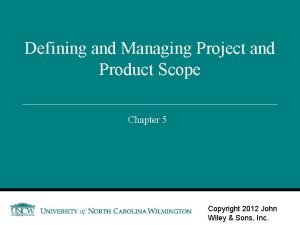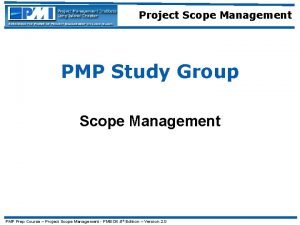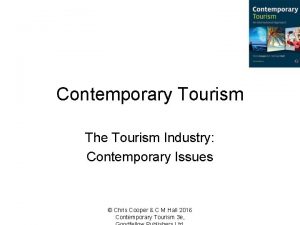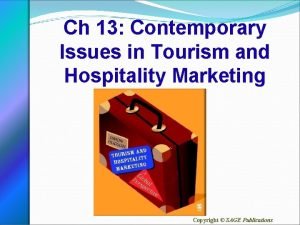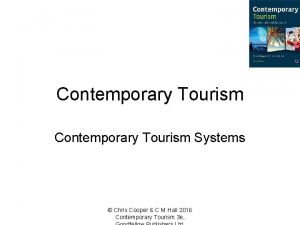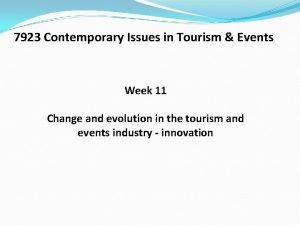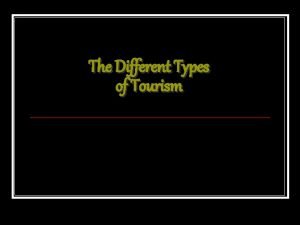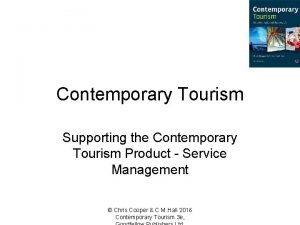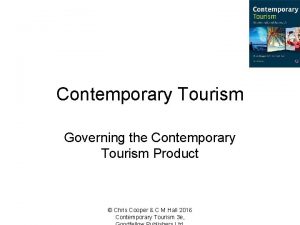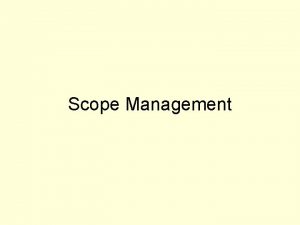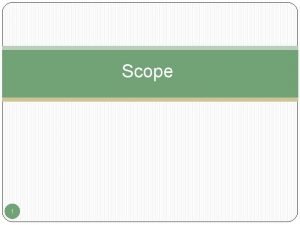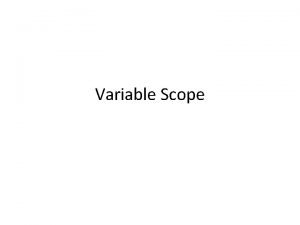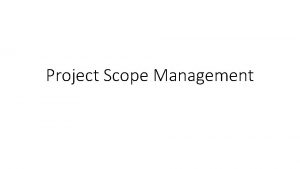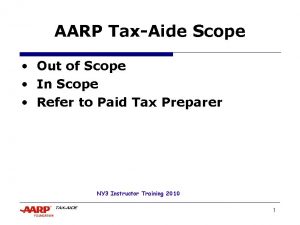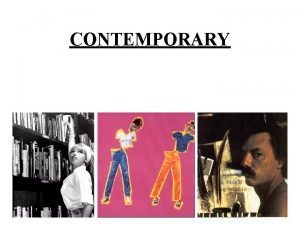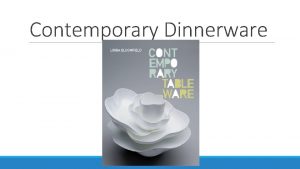Contemporary Tourism The Scope of the Contemporary Tourism













- Slides: 13

Contemporary Tourism The Scope of the Contemporary Tourism Sector © Chris Cooper & C M Hall 2016 Contemporary Tourism 3 e,

Lecture Objectives • Be aware of the scale and scope of the contemporary tourism industry • Understand the difficulties of defining the contemporary tourism industry • Be aware of the various approaches to defining tourism from a supplyside perspective • Recognise that tourism is a partially-industrialised system • Recognise the issues involved in measuring the contemporary tourism industry • Understand the status of tourism in standard industrial classifications • Appreciate the tourism satellite account approach and its benefits • Be familiar with the challenges of measuring the scale of tourism employment © Chris Cooper & C M Hall 2016 Contemporary Tourism 3 e,

Scope of the Tourism Sector • The world’s largest industry? • How do we measure the sector? • Tourism challenges contemporary paradigms • Tourism is complex • We have not really got to grips with its measurement © Chris Cooper & C M Hall 2016 Contemporary Tourism 3 e,

Scope of the Tourism Sector • • • Diverse Not a single product Tangible and intangible elements Produced where consumed Misunderstood and under-explored © Chris Cooper & C M Hall 2016 Contemporary Tourism 3 e,

Components of the Sector • • • 1. Tourism marketing 2. Tourist carriers 3. Tourist accommodation 4. Tourist attractions 5. Miscellaneous tourism services (e. g. taxis) 6. Tourism regulation (including government and education) © Chris Cooper & C M Hall 2016 Contemporary Tourism 3 e,

Definitions • • • Why define the sector? Statistics Legislation Credibility Traditional definitions based upon a single product and its market do not work for tourism © Chris Cooper & C M Hall 2016 Contemporary Tourism 3 e,

Smith versus Leiper • Smith - tourism is an industry that can be measured like any other • Leiper - tourism is a range of industries not a single one and is thus a partially industrialised system as other actors are involved © Chris Cooper & C M Hall 2016 Contemporary Tourism 3 e,

Measurement Approaches • SIC • ISIC • SICTA © Chris Cooper & C M Hall 2016 Contemporary Tourism 3 e,

Tourism Satellite Accounts • • Developed from the mid 1990 s Breakthrough in measurement More a demand side measure Associate spending to tourism purchases © Chris Cooper & C M Hall 2016 Contemporary Tourism 3 e,

TSAs Measure: • • Tourism's contribution to GDP; Tourism's ranking compared to other economic sectors; The number of jobs created by tourism in an economy; The amount of tourism investment tax revenues generated by tourism industries; Tourism consumption; Tourism's impact on a nation's balance of payments; Characteristics of tourism human resources; and More recently - culture, sport and carbon © Chris Cooper & C M Hall 2016 Contemporary Tourism 3 e,

Use of TSAs • © Chris Cooper & C M Hall 2016 Contemporary Tourism 3 e,

TSA Issues • 1. The fact that they really are a demand-side measure; • 2. They are expensive to produce as they often need further data collection; • 3. They are only updated infrequently and can be anything up to 8 years old; • 4. They are shaped by a nation’s SIC system and so can be imprecise or a poor fit with the structure of the industry; • 5. They demand powerful education of the industry to interpret them; and • 6. They are dependent upon the availability, quality and quantity of data. © Chris Cooper & C M Hall 2016 Contemporary Tourism 3 e,

Tourism Employment • Same issues as measuring the sector as a whole • Measured by FTEs • TSAs estimate employment • Many issues relating to employment • Issue of the quality of tourism jobs - the ‘decent work’ agenda © Chris Cooper & C M Hall 2016 Contemporary Tourism 3 e,
 Product scope vs project scope
Product scope vs project scope Scope management pmp
Scope management pmp Contemporary tourism issues
Contemporary tourism issues Contemporary tourism
Contemporary tourism Contemporary issues in tourism and hospitality
Contemporary issues in tourism and hospitality Contemporary tourism definition
Contemporary tourism definition Contemporary tourism meaning
Contemporary tourism meaning Contemporary issues in tourism
Contemporary issues in tourism Mass tourism vs alternative tourism
Mass tourism vs alternative tourism độ dài liên kết
độ dài liên kết Kể tên các môn thể thao
Kể tên các môn thể thao Thiếu nhi thế giới liên hoan
Thiếu nhi thế giới liên hoan Khi nào hổ con có thể sống độc lập
Khi nào hổ con có thể sống độc lập điện thế nghỉ
điện thế nghỉ
